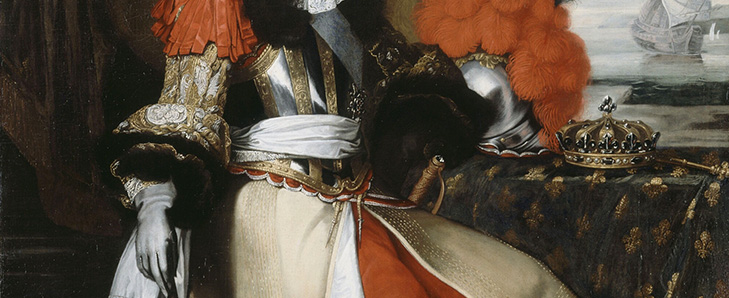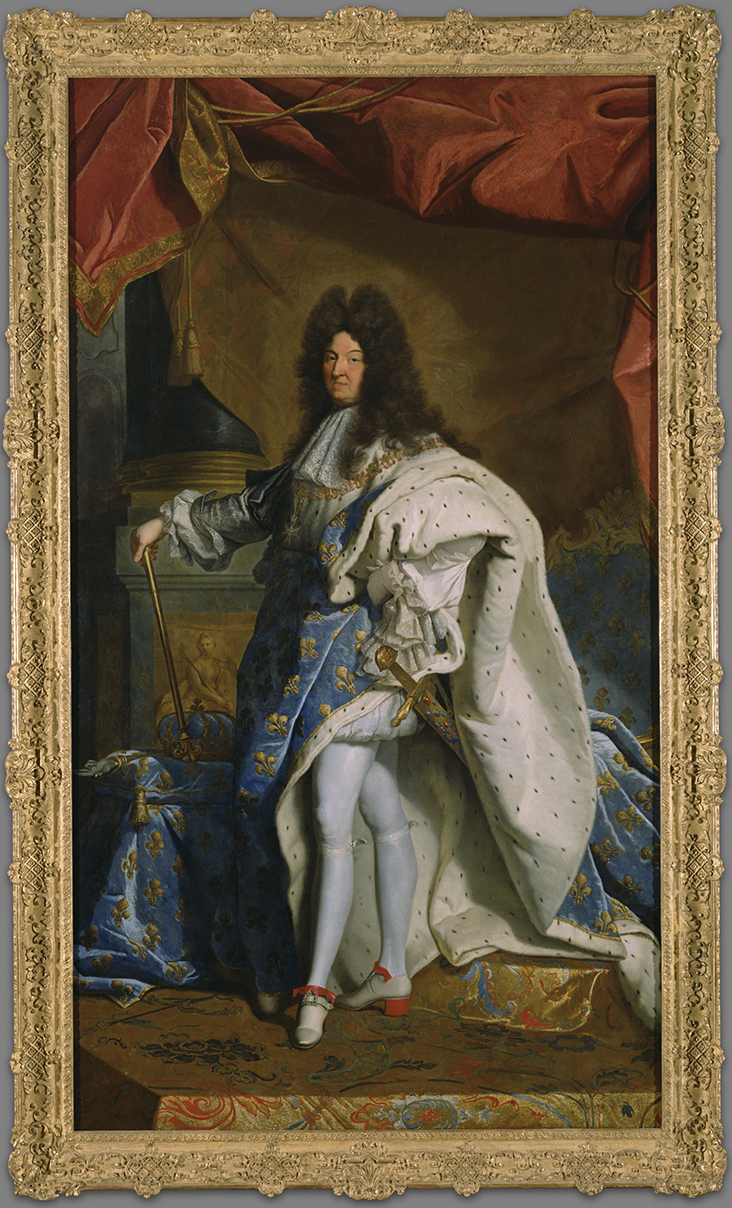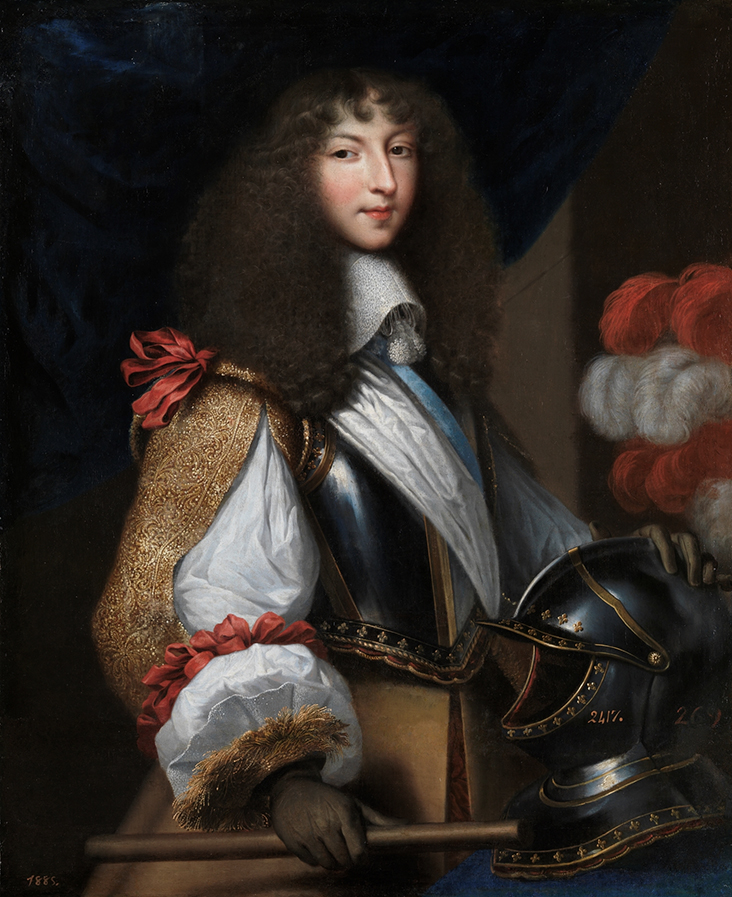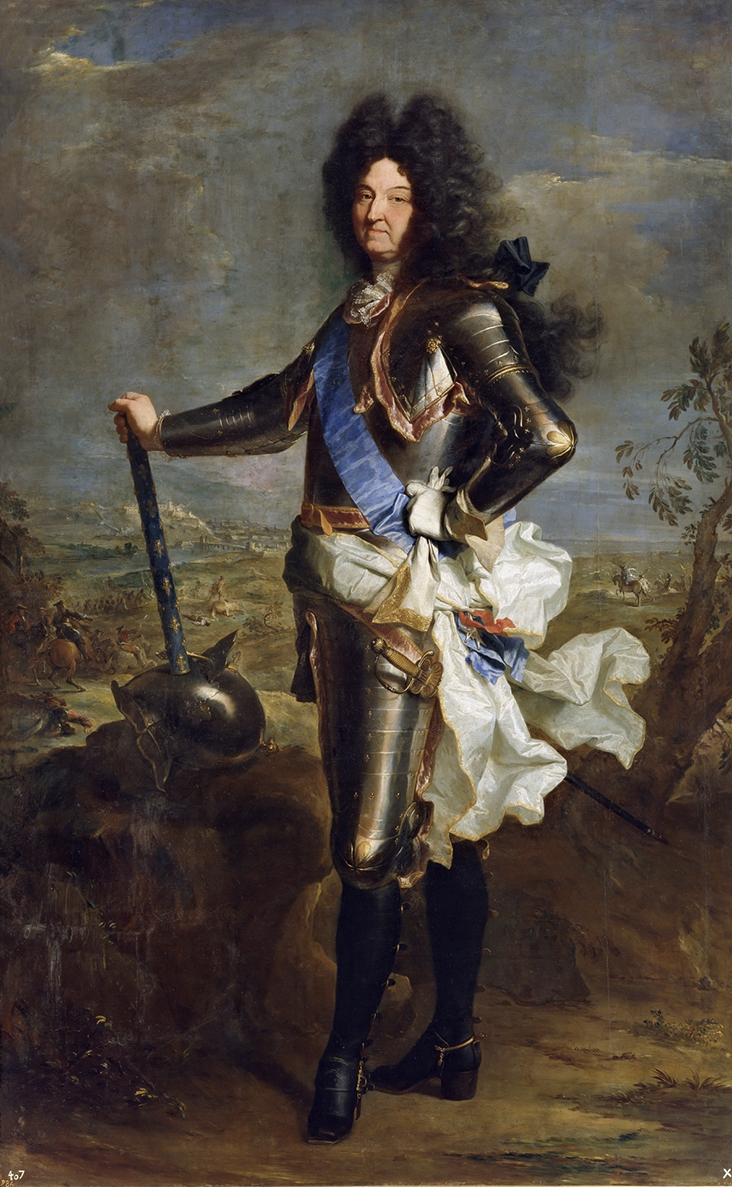Louis XIV: King of High Fashion
“No one has been more important to this history of power dressing than French King Louis XIV.” Ciara Fitzgerald, writer
The visionary French King Louis XIV staged a clothing revolution in the 17th century, which would forever alter the fashion landscape. A great aesthete, Louis focussed on indulgence and luxury, seamlessly blending his ideas into clothing, interiors, architecture and landscapes and transforming the French palace of Versailles into a dazzling Baroque dream. Demanding the highest standards of clothing for himself and his courtiers, he set a strict dress code with a focus on luxurious, immaculate details, including lace, ruffles, ribbons and jewels. Throughout his reign, Louis’ radical fashion reforms spread across Europe, establishing France as the world’s leading capital of haute couture.
Before King Louis took the throne, Spain led the European style with heavy, dark clothing, worn all year round, which was imported into France. But as his reign progressed, King Louis worked with finance minister Jean-Baptiste Colbert to radicalise the textile industry within France. As well as encouraging the production of new, luxury fabrics, he outlawed the import of fabric from outside France, pushing the wealthy elite and nobility to only buy from French business.
In a bold new move, he even introduced the concept of bi-annual fashion, with new textiles and clothes to be made twice a year, in summer and winter, an attitude that would later influence today’s seasonal fashion. He even passed a law to create the Parisian seamstresses’ guild, which supported women who made and sold women’s and children’s clothing. These changes left a lasting influence on France and by the end of Louis XIV’s reign, an entire third of the French population were employed in textile or fashion industries.
As his leadership continued, Louis’ own style became increasingly excessive, theatrical and impractical. Recognising the ability for clothing to convey his wealth, status and power, he styled himself as “The Sun King,” shining with glistening radiance in the most expensive and luxurious fabrics, cuts and ornamentation, wearing silks and velvets adorned with ruffles, lace, bows, pearls and embroidery. Raised by his parents to believe he was a gift directly from God, Louis’ ego was unsurpassed, and as an adult, only the finest clothing could reflect his divinely spiritual aura. In Charles Poerson’s painting Portrait of Louis XIV as Jupiter Conquering the Fronde, 1655, Louis even styles himself as Jupiter, King of all Gods.
The silhouettes of Louis’ clothing typified the flamboyance of the Baroque era, forming natural, curving shapes, free flowing lines, and a focus on volume, abandoning the restrictive and austere styles of the Renaissance. Moving beyond earlier mix and match style dressing, Louis also invented the en suite, an ensemble made from matching separates, which later evolved into the suit designs of today. Shoes were a particular passion for Louis, particularly those with embellishments and heels, which he is often seen wearing in his most ostentatious portraits, such as Claude Lefebvre’s Portrait of Louis XIV in Armour and Hyacinthe Rigaud’s Portrait of Louis XIV, 1701.
Within the Palace of Versailles, Louis established obsessively strict, immaculate standards for all his courtiers. Encouraging members of the French court to compete for his attention, he lavished special praise and attention on the very best dressed. Knowing full well his courtiers couldn’t afford to keep up with his ongoing demands, he deliberately encouraged them to overspend and push themselves into debt so they had no power to overthrow him. Some of the best dressed nobles were also given privileges and favours, which fostered a competitive environment of strutting peacocks, all vying for the King’s attention. But no one was allowed to outshine the King himself – in the King’s presence, men were expected to wear a habit habille, an extravagant coat made from velvet or silk, while women wore a habit de cour, an embroidered gown which exposed their bare shoulders. Only the King, and a tiny selection of his closest noblemen, wore the justaucorps a brevet, a breezy, light blue silk jacket. A select few were chosen to help the King get dressed, an act he transformed into a theatrical display which other nobles could even pay to watch. But only the King’s closest allies could hand him his most prized possessions to put on: his heeled shoes.


































































2 Comments
Pingback:
Divine Tips: King Louis XIV Hype Sneakers - iconREvuePingback:
The Birth of Dior's New Look - The Oxford Astrologer